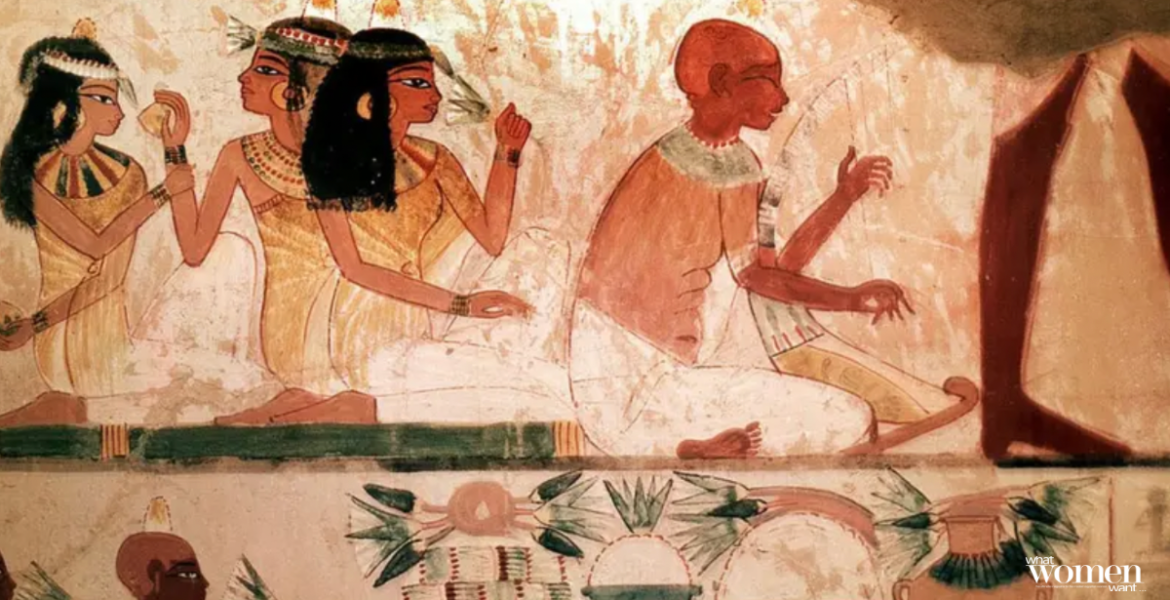Sham El-Nessim, with its vibrant colors, flavors, and joyful gatherings, embodies the essence of Egyptian culture. It holds a deep significance of renewal and rebirth. It brings families together to partake in ancient customs that connect the past with the present. Beyond its cultural importance, Sham El-Nessim carries a spiritual meaning, symbolizing the eternal cycle of life, the triumph of light over darkness, and the promise of abundance and prosperity. In celebrating this cherished festival, Egyptians honor their heritage, strengthen familial bonds, and embrace the beauty of nature’s awakening. The term “Sham El-Nessim,” meaning “sniffing the breeze,” marks the beginning of spring.
Origins and History:
The roots of Sham El-Nessim trace back to ancient Egypt. They celebrated as a festival of rejuvenation and fertility. Historically coinciding with the vernal equinox, it symbolized the balance between daylight and darkness, marking the start of vital agricultural activities for ancient Egyptian civilization.
Debates among specialists in ancient Egyptian linguistics persist regarding the etymology of “Sham El-Nessim.” The term “Shammu,” derived from ancient Egyptian hieroglyphs, initially denoted the summer season and harvest. Over time, it evolved into “sham” in the Coptic language, reflecting a late stage of ancient Egyptian writing with Greek letter adoption. Some interpretations suggest it means “harvest of plants,” maintaining its original essence. The addition of the Arabic term “naseem,” meaning a gentle breeze, emphasizes the mild weather associated with the onset of spring.
Sham El-Nessim has endured as a cherished celebration among Egyptians, evident in inscriptions adorning tomb walls commemorating ancient festivities. People traditionally ventured outdoors in groups to parks and fields to revel in the blossoming flowers and greenery.
Over millennia, the festival evolved, incorporating elements of Pharaonic, Coptic Christian, and Islamic traditions. Today, it remains a secular holiday celebrated by Egyptians of all faiths, reflecting the country’s diverse cultural heritage.
Customs and Traditions:
At the heart of Sham El-Nessim festivities lie timeless rituals that unite communities in joyful celebration. One beloved custom is the preparation and consumption of festive foods, notably salted fish (Fesikh), onions, and eggs.
The egg holds profound symbolism for Egyptians, representing renewal and the beginning of new creation. It is viewed as the origin of life and resurrection, with references in ancient religious literature.
Salted fish, known as “fesikh,” holds significance for marking the Nile River’s sanctification, dating back to the Fifth Dynasty. Egyptians excelled in its production, utilizing specialized workshop-like spaces. Additionally, salted fish was valued for its medicinal properties in treating ailments like spring fever and sunstrokes.
Onions carry significance stemming from an ancient legend of a prince’s miraculous recovery from illness, associated with the Sham El-Nessim celebration.
Preserving a Cultural Legacy:
As Egypt progresses into the 21st century, preserving cultural heritage remains paramount. Sham El-Nessim serves as a poignant reminder of Egypt’s enduring legacy. It embodies the resilience of its people and the richness of its traditions. Through celebrating Sham El-Nessim, Egyptians reaffirm their connection to their ancestors and commitment to safeguarding their cultural identity for future generations.
From the grand temples of Luxor to the bustling markets of Alexandria, the echoes of this beloved holiday resonate across Egypt. With each passing year, Sham El-Nessim continues to inspire hope, reminding Egyptians of the timeless beauty of their cultural heritage and the promise of a brighter future.




